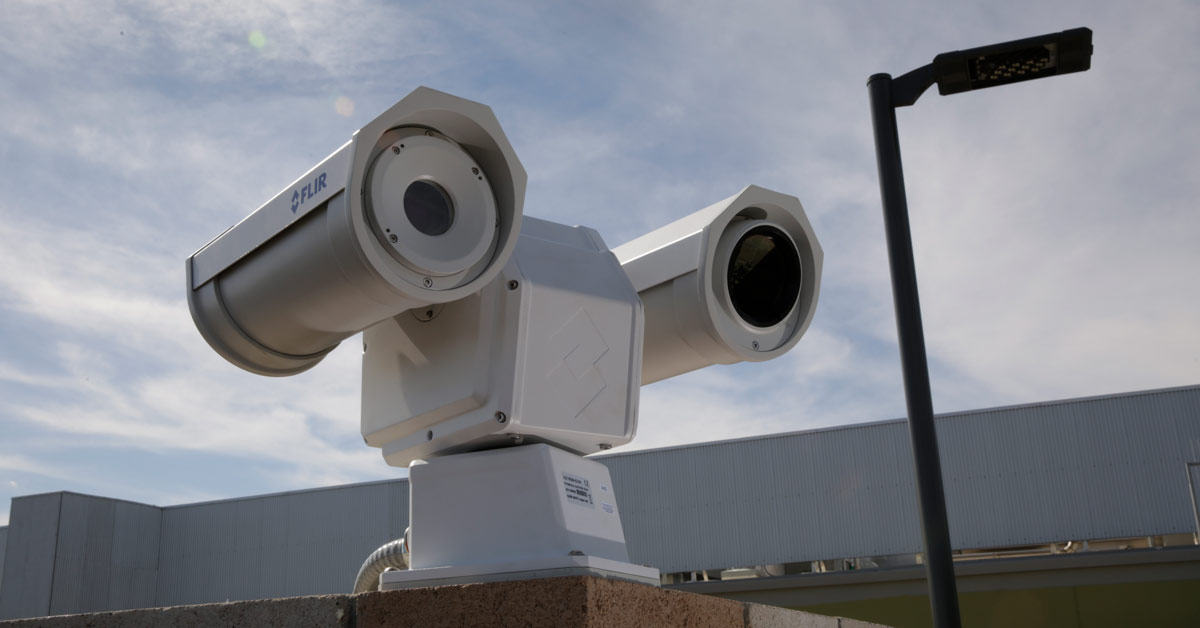
What is the highest range of zoom you’ve seen in a camera? Of course, for mobile photography, it’s the Huawei P30 Pro. For DSLRs, there are quite a number of cameras and lenses offering that. However, it could be the Panasonic DC-FZ80K Lumix 4K with 60X zoom offering the best long-range zoom. But of course, all of that is going to shame with this latest invention, an Ultra long-range AI camera that can capture human subjects from up to 28 miles away!
Yes, that is correct. Scientists in China developed this camera which uses Lasers and AI technology. So, you can tell, this is not your typical commercial camera. This has broader usage than zooming in and spying on your neighbor or taking close up shots of the moon.

This camera uses LIDAR technology, which means Light Detection and Ranging. Now, this technology has already been used in other types of imaging, but these images contained a ton of noise. But this time, the advanced computer image processing helps mitigate them. According to the researcher Zheng-Ping Li’s paper, this camera can also cut through smog and other pollution elements using a mixture of laser imaging and advanced AI software.
This camera uses a laser to judge the distance of a subject by recording the time taken to reflect back to the machine, the new software can also help ignore everything else that falls out of that time. Also, this feature helps the camera set specific distances.
In addition, this machine uses an infrared laser at a wavelength of 1550 nanometers, which makes the camera safe for use without any side effects to any creature. Furthermore, it also guards the image against solar photons that interfere with the camera resolution. Ultimately, the new AI software uses the sparse data collected by the machine to help form a recognizable image.
This kind of technology can help achieve high-resolution, fast, low-power 3D optical imaging over ultralong ranges, and has a broad set of applications. It opens new venues for advanced surveillance, remote sensing, and GIS.







![Best Gaming Laptops in Nepal Under Rs. 250,000 (रु 2.5 Lakhs) [2025] Best Gaming Laptops Under 2.5 lakhs in Nepal [Feb 2025 Update]](https://cdn.gadgetbytenepal.com/wp-content/uploads/2025/02/Best-Gaming-Laptops-Under-2.5-lakhs-in-Nepal-Feb-2025-Update.jpg)
![Best Gaming Laptops in Nepal Under Rs. 120,000 (रु 1.2 Lakhs) [2025] Best Budget Gaming Laptops Under Rs 120000 in Nepal 2025 Update](https://cdn.gadgetbytenepal.com/wp-content/uploads/2025/05/Best-Budget-Gaming-Laptops-Under-Rs-120000-in-Nepal-2024-Update.jpg)
![Best Laptops Under Rs. 80,000 in Nepal [2025] Best Laptops Under 80,000 in Nepal March 2025 Update](https://cdn.gadgetbytenepal.com/wp-content/uploads/2025/03/Best-Laptops-Under-80000-in-Nepal-March-2025-Update.jpg)
![Best Gaming Laptops in Nepal Under Rs. 200,000 (रु 2 Lakhs) [2025] Best gaming lapotp under 2 lakhs Nepal Feb 2025](https://cdn.gadgetbytenepal.com/wp-content/uploads/2025/01/Best-Gaming-Laptops-Under-2-Lakh-Nepal-Feb-2025-Update.jpg)

![Best Mobile Phones Under Rs. 15,000 in Nepal [Updated 2025] Best Phones Under 15000 in Nepal 2024 Budget Smartphones Cheap Affordable](https://cdn.gadgetbytenepal.com/wp-content/uploads/2024/03/Best-Phones-Under-15000-in-Nepal-2024.jpg)
![Best Mobile Phones Under Rs. 20,000 in Nepal [Updated] Best Mobile Phones Under NPR 20000 in Nepal 2023 Updated Samsung Xiaomi Redmi POCO Realme Narzo Benco](https://cdn.gadgetbytenepal.com/wp-content/uploads/2024/01/Best-Phones-Under-20000-in-Nepal-2024.jpg)
![Best Mobile Phones Under Rs. 30,000 in Nepal [Updated 2025] Best Phones Under 30000 in Nepal](https://cdn.gadgetbytenepal.com/wp-content/uploads/2025/01/Best-Phones-Under-30000-in-Nepal.jpg)
![Best Mobile Phones Under Rs. 40,000 in Nepal [Updated 2025] Best Phones Under 40000 in Nepal 2024 Smartphones Mobile Midrange](https://cdn.gadgetbytenepal.com/wp-content/uploads/2024/02/Best-Phones-Under-40000-in-Nepal-2024.jpg)
![Best Mobile Phones Under Rs. 50,000 in Nepal [Updated 2025] Best Phones Under 50000 in Nepal](https://cdn.gadgetbytenepal.com/wp-content/uploads/2025/01/Best-Phones-Under-50000-in-Nepal.jpg)
![Best Flagship Smartphones To Buy In Nepal [Updated] Best flagship phone 2025](https://cdn.gadgetbytenepal.com/wp-content/uploads/2024/07/Best-Flagship-Phones-who-is-it-ft-1.jpg)